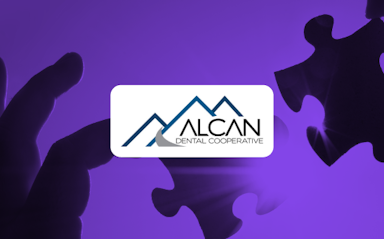What You Need To Know About Clean Claims in Dental Practice Management
The frustrating occurrence of claim denials continues to put enormous pressure on healthcare providers. For the most part, it presents to be a hefty investment for both the healthcare providers and the patients.
But here’s some good news: with the proper understanding of the strategic touchpoints of clean claims, your team can decrease the chance of a claim being rejected while ensuring faster turnover rates and profitability.
However, the real question is how to prevent claim denials in the first place. To answer this question, let’s explore the critical features, processes, and steps required for clean claims submission while taking care of the profitability of your practice.
What is a clean claim?
A clean claim is defined as “a claim which has no defect, impropriety or special circumstance, including incomplete documentation that delays timely payment”.
Identify the provider and facility in order to verify, if necessary, the affiliation status.
Identify the patient and insurance plan subscriber.
List the date and place of service.
Only be for covered services for an eligible individual within the insurance policy.
Substantiate the dental necessity and appropriateness of the service provided, if necessary.
Contain sufficient information to establish that prior authorisation was obtained if required.
Identify the service rendered using a generally accepted Methodology for coding procedures or services.
Include additional documentation based on services rendered as reasonably required by the plan.
Have providers who bill a dental plan within one year — or a stipulated period — after the date of service.
Choose the best practices to increase the Clean Claim Rate
A high Clean Claim Rate (CCR) is vital for the operational health and success of a dental practice. Therefore, the CCR is a crucial revenue cycle management metric that indicates the quality of claims-related data being collected and reported as a claim as it begins its journey from the provider to the clearinghouse and on to the payor.
CCR is the ratio of claims that pass all edits without requiring manual intervention to the total number of claims processed for billing.

However, it is important to remember that a 100 percent CCR may not be realistic, given that payor requirements are constantly changing and upstream errors and data quality issues are tough to overcome entirely. Therefore, with the right combination of people, processes and technology, practices can target and achieve higher CCR rates of up to 90 percent, thereby enabling tighter control over revenue and increasing the bottom line and competitiveness of the practice.
What is claim scrubbing?
Claim Scrubbing can be defined as verifying the state of claims before submitting them to insurers. This ensures accuracy and completion while significantly increasing the chances of claims being accepted.
Benefits of Claim Scrubbing
Faster Cash Flow
Improved patient satisfaction
Increased collaboration and productivity
Accurate claims
Saves time
Claims: Rejection Versus Denials
Two major reasons lead to the re-processing of claims — rejections and denials. While these terms are often used interchangeably, they are different and require distinct solutions.
Rejected Claims
Rejected claims These are claims that have come back due to missing or invalid information required for an insurance carrier to properly process a claim. A claim that has been rejected has not been entered into the payor’s adjudication system. From the perspective of the payer, that claim is non-existent.
Rejections happen at two touchpoints in the claim management workflow:
- At the clearinghouse
These rejections typically include payor-related information that the clearinghouse builds into edits to prevent claims from being passed on to the payor only to be rejected by the payor. For example, if a subscriber ID is required to have an alpha prefix and a provider submits a claim that is missing that prefix, the clearinghouse edits catch that error and return the claim as rejected.
- At the payor
These are commonly related to patient demographics and eligibility issues discovered when the claim reaches the payor. The most common patient-related rejections are also the most preventable. “Subscriber and Subscriber ID Mismatched” or “Not Found” are usually an indication that the patient was not eligible at the time of service or that there is a data-entry error in the patient’s demographics. These rejections can be prevented by solely making sure that eligibility is verified at the time of service. It’s all too common for practices to lose revenue on visits due to the failure of eligibility verification and then fall behind in reworking the rejected claims.
Denied claims
These are claims accepted by the payor but returned to the provider with either no payment or partial payment after adjudication. Denials must be either adjusted off, appealed, or reopened if the provider has a valid reason. A claim that has been processed and denied cannot be corrected and resubmitted as a rejection.
There are generally no appeal rights for claims that have been denied for delayed filing, so it is crucial to make sure that rejected claims are corrected and resubmitted as soon as possible.
How the fastest-growing practices improved their CCR (Clean Claim rate) with CareStack?
At CareStack, we are uniquely positioned to help fast-growing dental practices continuously improve their Clean Claim Rate (CCR). This is facilitated by -
A modern technology foundation that enables aggregating and analyzing data across all locations of a practice
A simple interface that prioritizes usability and accessibility to this data for all types of business users
Multiple layers of built-in claim-scrubbing logic cover provider setup, practice setup, payer setup, patient demographic and eligibility information, as well as documentation specific to services
Ability to create and customize workflows around lists and notes to enable users to communicate and collaborate efficiently across geographies and time zones
In the subsequent sections, we will explore the claim-scrubbing process and how claim-scrubbing is facilitated in CareStack.

Checklist-driven training and onboarding
When your practice is onboard the CareStack platform, your existing data — including the provider, patient, and insurance information — is migrated as-is. We have tied up with two of the largest clearinghouses in the United States to provide electronic claims, eligibility, and ERA services, and our customer support team members take you through any new credentialing and enrollment requirements if you are crossing over from another clearinghouse service. This ensures a smooth transition into our platform and eliminates any possibility of errors in setting up new providers or locations even before you start billing.
Accurate initial software setup
Immediately after data migration and credentialing, the application setup begins. In this phase, our customer support team works with the practice champion to ensure that the following entities are set up accurately in Practice Settings in CareStack:
Insurance carriers: name, address, insurance ID, and eligibility forms
Insurance plans: plan type, benefits coordination method, pre-auth requirements, and fee schedules
Providers: details include name, DEA, NPI, State License Number details
Billing codes: details include ADA billing codes, CMS billing codes, ICD 10 diagnostic codes, along with their associated expiry date, chart drawings, and sales tax Claims: details include default claim type and electronic attachment NEA rule setup
During the initial setup, the CareStack team ensures that the data associated with each billing entity
— including provider, payor, and plan — is accurately created so that at the time of billing, any rejection or denial due to wrong data is minimized.
Build-in billing validations
CareStack's built-in features validate billing information at the point of care coordination itself. This ensures that the users are immediately informed about the possible impact of their actions on billing, thereby enabling decision-making as early as possible in the workflow. Some of these features in CareStack are
Smart Code Logic while charting
18-level rule hierarchy to accurately calculate fees during treatment completion
Visual cues for identifying manual changes in fees
Ability to re-estimate fees on change of insurance
Preset tooth and surface-level validations for each procedure code to ensure accurate
claims, Validating the expiry of procedure code based on the Date of Service, to eliminate accidental billing and check-out of expired codes
- User prompting to validate the address of the patient before they leave the office.
Configurable billing rules
In addition to the built-in validations, users can also set up their own rules in CareStack. This comes in the form of two features:
Care audit rules: This feature, which can be turned on and off, enables users to define messages for a particular procedure code. These messages are displayed when each code is being checked out. This information is also available on-demand for users wherever they are in the application, aiding them in identifying dependencies or alternatives to the billing codes at the point of completion, thereby reducing billing errors.
Eligibility rules: These rules are set up manually or electronically while verifying patient eligibility. Like care audit rules, they also present themselves automatically during the different stages of treatment completion and billing. By prompting the user about payer-specific rules in relation to many factors, such as frequency, age, time limitations, exclusions, and bundling, this allows users to make corrections while checking out even before a claim is generated.
Claim-level validations
During the claim-creation process, all setup-related activities are validated further. This includes:
- Claim form validations
Information about entities such as treating provider, billing provider, place of treatment, and orthodontic claim-related information is validated when each claim is generated in CareStack.
Claims that require immediate action are made available as a filtered list. These claims are submitted to the clearinghouse only after users complete the missing information, thereby ensuring a high First Pass Acceptance Rate. Integrated attachment validations: All required additional documentation, such as x-rays and narratives, is validated by integrating third-party services like NEA.
As soon as a claim is created, the user is redirected to a filtered list of claims created by the automatic validation process. These claims can only be submitted after the required attachment is added by the users.
- Avoiding rejections
In the claims process, most rejections occur due to missing or invalid data. Other errors that lead to rejections include the use of the wrong date format, the invalidity of zip codes and inconsistencies in user data. With built-in validation features and rule-based data capture, many of these rejections can be avoided.
If credentialing and provider setup are carried out accurately in the onboarding phase itself, the chances of rejections shrink to a great extent. The claims process can be made smoother when crucial information fields (such as Subscriber ID, NPI no) are made mandatory in the process of onboarding. Carestack offers a suite of tools that work to minimize errors due to missing data.
In the CareStack system, crucial data fields are required to be filled before proceeding to payment or claim creation. This includes the patient’s complete name, date of birth, SSN, subscriber ID and so forth. CareStack’s comprehensive eligibility forms ensure that every single detail about the patient’s insurance plan is captured as a part of rejection prevention.
During onboarding, the CareStack support team facilitates provider credentialing and initial set-up of all the codes and rules.
- Avoiding denials
When it comes to denials, the lack of supporting documentation, data inaccuracies, improper dental coding, and untimely filing of dental insurance claims are seen to have the most profound effect. Another aspect that affects denials is the change in regulations and policies in claim processing.
Features such as code-level rules allow the user to assign a date of service to the procedure code, which automatically renders the code invalid on expiry. Age restrictions can also be implemented using the same rules. Additional documentation like x-rays, charts or EOBs can be made mandatory for specific codes to aid in better claim processing. Eligibility rules, once set up by the user, monitor the frequency of code usage for specific procedures. CareStack’s features are built for denial prevention. Rules assigned during set-up flag expired procedure codes and alert users trying to check out them.
CareStack employs Care Audit Rules, a system-wide rule manager that can suggest alternative procedure codes and prompt users with informative messages on checkout. The built-in document manager can be used to upload, save, and organize crucial documentation that can be attached to claims using technologies like NEA FastAttach.

Bottom line
Reducing billing hassles and ensuring clinical efficiency come from a well-organized claim management system. CareStack is the best dental software in the market, helping you to achieve clean claims while easily providing the status of all your dental insurance claim processing without the time and effort to create external spreadsheets.
Looking for dental billing outsourcing solutions? Choose CareStack! Talk to our experts today




